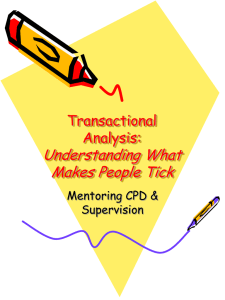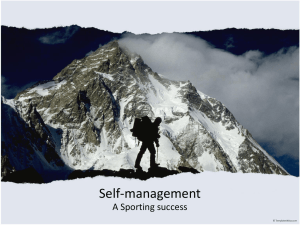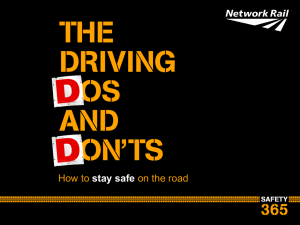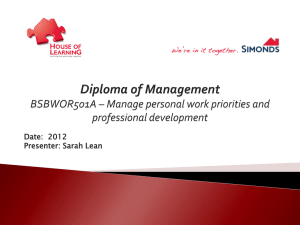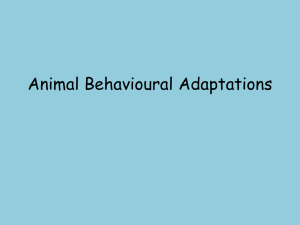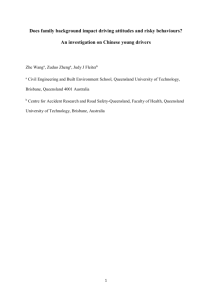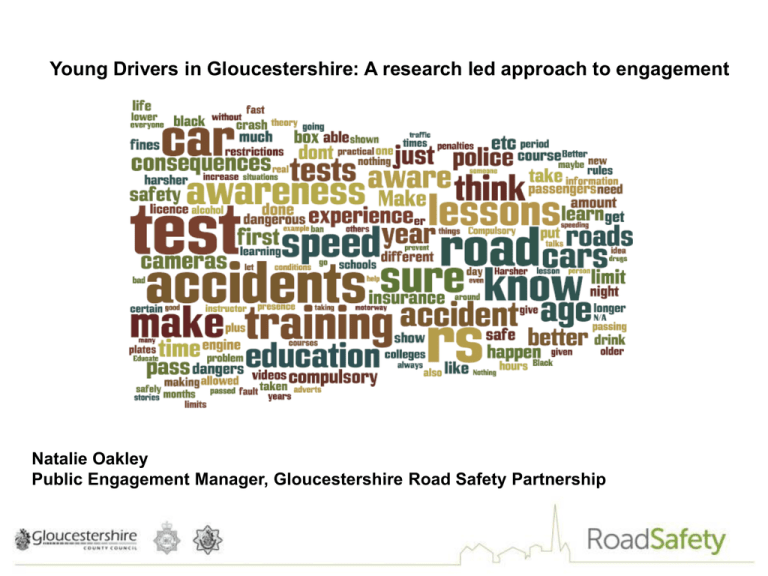
Young Drivers in Gloucestershire: A research led approach to engagement
Natalie Oakley
Public Engagement Manager, Gloucestershire Road Safety Partnership
Young driver crashes in Gloucestershire
Who: Young men (68%)
What: Driver error
Where: Rural roads
When: Weekends
Starting the conversation
The Survey Questions
The Study
•Quantitative online survey of over 1000
students in 6 broad geographical & sociodemographic areas
• 16 x 1 hour qualitative depth
interviews with drivers and passengers
experiences of being a car driver
• perceptions of skill
• driving behaviour
• experiences of collisions, speeding
• attitudes towards breaking the law
experiences of being a passenger
• driving behaviours experienced
• experiences of collisions, speeding
• levels of anxiety experienced
beliefs concerning
• why young drivers have crashes
• what might change their behaviour
• what else should be done to tackle
the problem of young driver crashes
Working them out
The people
•Many still living at home
•Defined by social life & dynamics of friendship groups
•Developing own identity by pushing boundaries and playing with risk
•Driving either with complete nervousness or total cockiness
The drivers
•Car is a bubble of independence, “me space – who I am”
•Chance to “beat the system” and to escape
•Cheap venue
The media
•Social media main channel of contact
•Immune to “shocking” content – watching crashes for “fun”
•Limited live media - self streamed content – iPods vs. radio, Iplayer
vs. TV but still accessing outdoor, print media
•Embarrassed by “yoof” marketing, text speak
The age split
17-19 year old driver
•New found freedom
• Ability to let rip
• The chance to impress
• Fight for supremacy
• Everyone wants you (for a lift)
• Babe magnet
• Irresponsible
Billy, 17, 2 weeks post
test, drives at weekends
The age split
20-24 years old drivers
• Economic necessity
• Becoming responsible
• Life stresses showing
• Value car as an asset
• Believe more skilful
• Still erratic behaviours
Molly, 21, driving 4 years,
commutes to work
The behaviour split
Planned
Nocturnal activities
•car park meets/rallies
•racing/cruising
•rights of
passage/dares
•no destination journeys
Motivated by
•proving yourself
•gang mentality
•thrill seeking
Targeted
Prevention
Types of behaviours
Unplanned
In-car distractions
•group chat
•loud music
•digital dependency
Lone driving & speeding
•open road mentality of speeding
•no other cars around – ok to put your foot
down
Cramming
•6/7 crammed into car – the lunchtime trip to
McD’s
Motivated by
•mood
•impulse
•being scatty
•bad time keeping
Education
Observed and self reported behaviours
Behaviours by drivers as observed by passengers (male & female)
Observed and self reported behaviours
Male v female behaviours (self reported)
Beliefs and anxiety
Perceived levels of skill
amongst young drivers
Levels of fear and anxiety
amongst young passengers
10
Why do young people think young people crash?
11
What did they say would change their driving behaviour?
Behaviour change levers
12
What do they want us to do?
Raise awareness
Help change attitudes
Drivers
• Unpick the “coolness” of reckless driving
• Campaign in a way that young people can
engage with – right tone, right concept, don’t
judge, don’t compare
Passengers
•Give them the tools to stand up to
dangerous drivers
Help improve skills
• Follow up courses for new drivers
• Stronger tests
• Ongoing learning
• Awareness training
•Changing dangerous behaviours
Of risk
• Speeding
• Mobile phones
• Driving on soft drugs
• Cramming
Of consequence
• Real life scenarios and outcomes
Of criminality of reckless driving
•The laws and the consequences
Law enforcement
• Be visible to them
• Enforce the rules around specific behaviours
• Enforce at known night spots
• Help regulate dangerous behaviour
• Harsher penalties
Speaking to them directly and campaigning effectively
The Designed to Drive
programme was:
6 week engagement
programme with students
from Gloucestershire
College
Designed to Drive: The winner
Giving them the skills to drive safely
The Drive for Life session covers:
• Speeding
• Distractions
• Collision investigation
• Drink & drug driving
• Seatbelts
• Real life crashes & consequences
• Boys & Girls – gender specific training
Regulating behaviour and enforcing the law
• Development of the
Gloucestershire Road Safety
Academy
•Access to Police collision data
• £120k investment from the
Police & Crime Commissioner
• Targeted enforcement using
the Special Constabulary and
Roads Policing Unit
Conclusions
Our research led approach to engagement has and will continue to enable us to:
Build targeted and age/sex specific programmes of engagement
Redefine our communication channels with young people
Understand attitudes, beliefs and behaviours so that we can begin to affect them
Raise awareness of the key risks for young drivers in Glos
Enforce the law around specific behaviours

